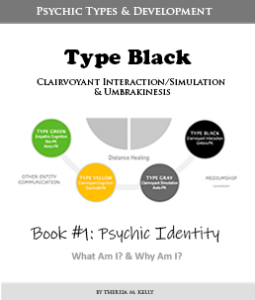PSYCHOLOGY OF GHOSTS: PART 3
The second type of ghosts are people who may seek to intelligently communicate with strangers to express themselves and lighten their emotional troubles.
 However, they are people that may need a little encouragement in order to build trust.
However, they are people that may need a little encouragement in order to build trust.
Let them know that you are there to listen to them and to help them in any way that you can.
Let them know they have nothing to fear from you and remind them of their safety.
Be supportive, encouraging, and loving if they do choose to respond. Try speaking to them and asking questions in the present tense before asking about their past. Bring them into the present moment and give them time to focus.
If you’re planning on going to a location with a history, DO YOUR RESEARCH. Learn about who the ghost was, their career, interests, hobbies, and loved ones. Create a spirit life box.
A spirit life box is a simple wooden box containing items that the ghost may find familiar like:
 Things the ghost once owned, either things they actually owned or common household objects that are from the period of time when they were living.
Things the ghost once owned, either things they actually owned or common household objects that are from the period of time when they were living.- Photos of their immediate family, or from their life, from their town during the period of their life.
 These are things they are likely to have an emotional connection too, which will make it more likely for them to want to physically interact with them and you.
These are things they are likely to have an emotional connection too, which will make it more likely for them to want to physically interact with them and you.
 Different things may “speak” to them at different times, so put as many things in the life box as possible and leave the lid off.
Different things may “speak” to them at different times, so put as many things in the life box as possible and leave the lid off.
 Imagine your response if you had been lost and confused and had not seen a photo of your wife in 20 years.
Imagine your response if you had been lost and confused and had not seen a photo of your wife in 20 years.
 Or, imagine your response if you were a little kid and hadn’t played with a toy in many years.
Or, imagine your response if you were a little kid and hadn’t played with a toy in many years.
 Talk a little bit about their history but avoid any topics that may cause feelings of anger or guilt, such as focusing on how they died. Instead, try to focus on how they lived.
Talk a little bit about their history but avoid any topics that may cause feelings of anger or guilt, such as focusing on how they died. Instead, try to focus on how they lived.
 Everyone likes to tell their story to those who are willing to listen, even the dearly departed.
Everyone likes to tell their story to those who are willing to listen, even the dearly departed.
Do not pretend to understand what they are going through, you can’t. Do not expect them to open up right away, they may not. It may take them hours, even days to feel comfortable with you enough to respond. This means you will have to visit a location several to many times. Be patient and invest time and effort.
 Real, vivid responses require patience, familiarity, and trust. If you offer to help them in any way you can, keep going back until you can. Do not make promises, stick around for a couple of hours, and never go back. Giving hope to the hopeless and ripping it out from under them is cruel. They are people too.
Real, vivid responses require patience, familiarity, and trust. If you offer to help them in any way you can, keep going back until you can. Do not make promises, stick around for a couple of hours, and never go back. Giving hope to the hopeless and ripping it out from under them is cruel. They are people too.
If you enter a room they are in and you sense that they immediately left the room, set up in that room. They were likely in that room due to familiarity and a sense of security. Give them time to calm down and see that you’re not a threat and they will return.
Be respectful. Even though you are there to observe, do not treat ghosts like they are a sideshow attraction. BE HUMAN. Take along some games like a deck of cards, dice, jacks, or board games.
If you bring a family member or friend to join in on the experience talk quietly among yourselves, share life stories, and laugh quietly when appropriate. Show the ghost you are sticking around for a while but that you can still be respectful of their space.
 Be patient. Some ghosts will wander off to collect themselves and make sense of your presence. If you give them their space, a lot of space, and don’t chase after them, they may be “chattier” later after they work up the courage to interact with you and think about their past.
Be patient. Some ghosts will wander off to collect themselves and make sense of your presence. If you give them their space, a lot of space, and don’t chase after them, they may be “chattier” later after they work up the courage to interact with you and think about their past.
DON’T PUSH. Ask them if they want to talk about what they are feeling, thinking, or experiencing in the present; they can hear you from the other room.
 Avoid asking a question, and when no response is had, moving on to another. It may take a long while for the ghost to focus on the question and figure out the best way to communicate the answer. Asking too many questions over a short period of time will only frustrate. Getting a response from a nervous ghost is 10% asking questions, and 90% being patient.
Avoid asking a question, and when no response is had, moving on to another. It may take a long while for the ghost to focus on the question and figure out the best way to communicate the answer. Asking too many questions over a short period of time will only frustrate. Getting a response from a nervous ghost is 10% asking questions, and 90% being patient.
If you notice a response, respond to it. Let the ghost know what you heard, how you heard it, and what your interpretation of that response is. Allow time for the ghost to correct misinterpretations.
 Smile, relax, stay calm, and be friendly. They can sense your emotions, read your body language, and are likely to be calmer if you are too. Avoid displaying shock or fear.
Smile, relax, stay calm, and be friendly. They can sense your emotions, read your body language, and are likely to be calmer if you are too. Avoid displaying shock or fear.
If you appear to be startled by their responses, they may not continue to do so. It’s better to act like you were expecting that random noise rather than overreacting to it.
Try to sense what they are feeling and be mindful of non-verbal cues and responses such as any:
- Movements, such as how they walk, where they sit/stand, body posture if you can see it, any other small movements they make in the room.
- Touch, such as a tap, a pat, or feeling of their hand on your shoulder.
- Space, such as how close or far away they are standing from you, if they are standing in the open or in the corner, curled up in the corner, invading your personal space, sitting next to you, or pacing.
- Smells, ghosts can produce smells often in relation to their past such as cigar smoke or perfume.
- Sounds, such as knocking, tapping, rapping, stomping, rustling, sighing, or crying. How quiet are the sounds, how loud?
Ask them what you can do to help them, let them know that you are there for them, not the other way around. It could be anything from explaining how they died, if you know, to communicating something to a living loved one.
If it’s something they want like a photo, get it, and come right back. Print it out and leave it there for them. The more you know about their history the more prepared you’ll be to have the item they want with you and the more prepared you will be to ask relevant questions.
 Be knowledgeable about the events that followed their death if possible. For example, if their spouse has since died, let them know where, when, and how. If their children are still alive, find out about recent events (example “Your daughter Sue just had a baby girl. She named her Rebecca.” and bring a photo of the baby).
Be knowledgeable about the events that followed their death if possible. For example, if their spouse has since died, let them know where, when, and how. If their children are still alive, find out about recent events (example “Your daughter Sue just had a baby girl. She named her Rebecca.” and bring a photo of the baby).
There are so many reasons why a ghost may choose to not cross-over into the afterlife, and it could be as simple as needing to know that their family is OK.
Things to ask and say:
- Acknowledge their situation: “I heard that you died when ___. “
- Express your concern: “I’m sorry to hear that this happened to you.”
- Be genuine and show emotion: “I’m not sure what to say, but I want you to know I care.”
- Offer support: “Tell me what I can do for you.”
- Ask about their present state: “What are you feeling right now?”
Things to avoid asking and saying:
- “I know how you feel.”
- “Look at what you have to be thankful for.”
- “This is behind you now; it’s time to get on with your life.”
- Any statements that begin with “You should” or “You will.” This is standard for anyone suffering loss and anxiety. Instead use, “Have you thought about” or “You might.”
And lastly, people need the most support on special days. Visit the ghost on the anniversary of their birth or death, or maybe the birth of their children, but be sensitive to the occasion. Let them know you are there for them, even if it is only your presence and comfort you can offer them.
If you know absolutely nothing about the ghost you will have a lot more detective work to do, which means you will need more time working with them and far more patience because you will have nothing familiar to offer them upfront, and very little to use to build trust.
 In this case, focus on the basics like are they male or female, young or old, what time period are they from? Even the smallest bits of information can help you slowly build a spirit box to gain trust and to get them talking more. Tell them about yourself and some of your life stories. Let them get to know YOU.
In this case, focus on the basics like are they male or female, young or old, what time period are they from? Even the smallest bits of information can help you slowly build a spirit box to gain trust and to get them talking more. Tell them about yourself and some of your life stories. Let them get to know YOU.
Get to know them, build a relationship with them, become familiar, and build trust.
Because…
They are people too.






